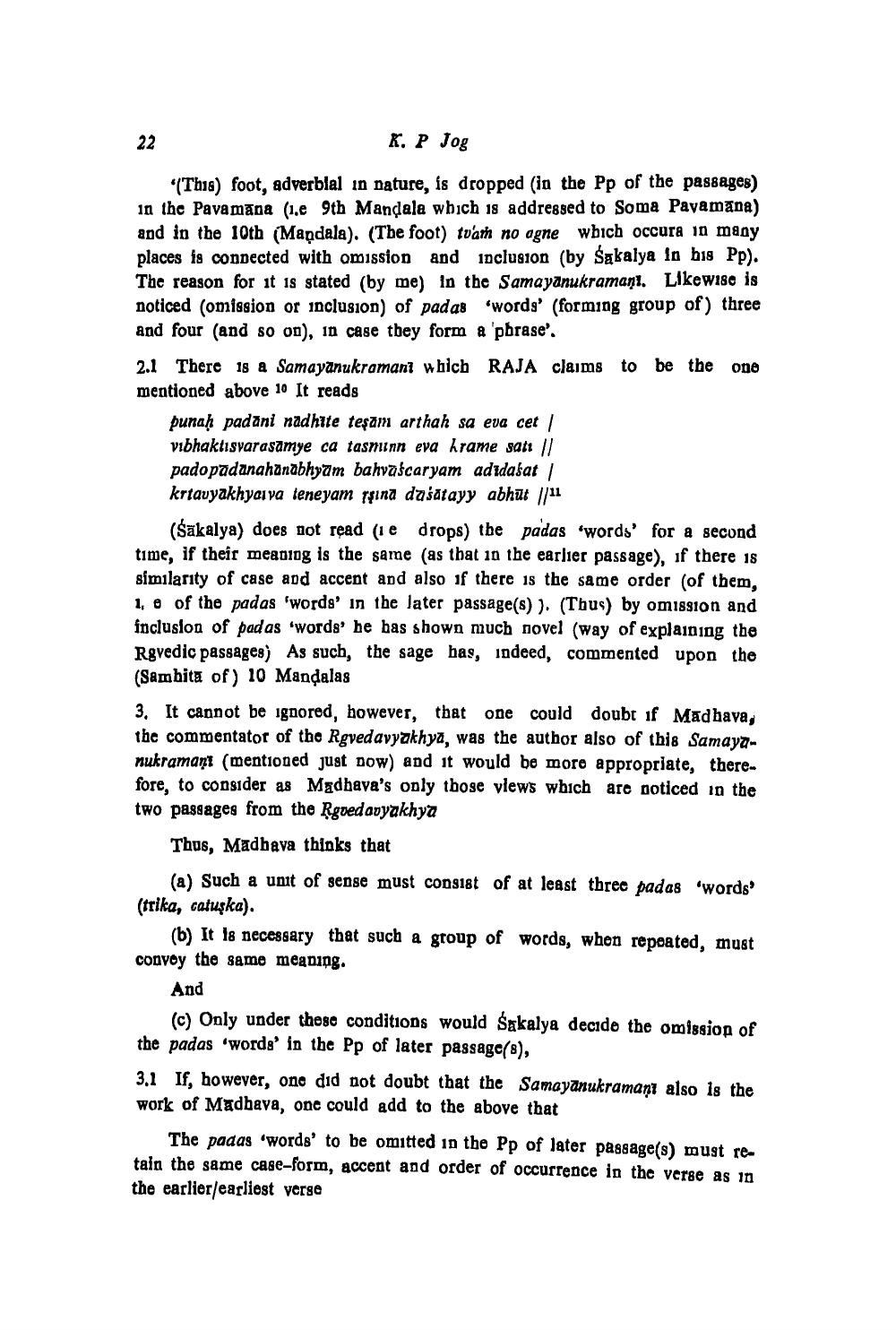________________
K. P Jog
"(This) foot, adverbial in nature, is dropped (in the Pp of the passages) in the Pavamana (1.e 9th Mandala which is addressed to Soma Pavamana) and in the 10th (Mandala). (The foot) tvam no agne which occura in many places is connected with omission and inclusion (by Sakalya in his Pp). The reason for it is stated (by me) in the Samayanukramant. Likewise is noticed (omission or inclusion) of padas 'words' (forming group of) three and four (and so on), in case they form a 'phrase".
22
2.1 There is a Samayanukramant which RAJA claims to be the one mentioned above 10 It reads
punaḥ padāni nadhite teşām arthah sa eva cet | vibhaktisvarasamye ca tasmunn eva krame satı || pado padanahanabhyam bahvaścaryam adidasat | krtavyakhyaiva teneyam ṛṣinā dāśātayy abhut ||11 (Sakalya) does not read (ie drops) the padas "words' for a second time, if their meaning is the same (as that in the earlier passage), if there is similarity of case and accent and also if there is the same order (of them, 1, e of the padas 'words' in the later passage(s) ). (Thus) by omission and inclusion of pad as 'words' he has shown much novel (way of explaining the Rgvedic passages) As such, the sage has, indeed, commented upon the (Samhita of) 10 Mandalas
3. It cannot be ignored, however, that one could doubt if Madhava, the commentator of the Rgvedavyakhya, was the author also of this Samayanukramant (mentioned just now) and it would be more appropriate, therefore, to consider as Madhava's only those views which are noticed in the two passages from the Rgvedavyakhya
Thus, Madhava thinks that
(a) Such a unit of sense must consist of at least three padas 'words' (trika, catuşka).
(b) It is necessary that such a group of words, when repeated, must convey the same meaning.
And
(c) Only under these conditions would Śakalya decide the omission of the padas 'words' in the Pp of later passage(s),
3.1 If, however, one did not doubt that the Samayanukramant also is the work of Madhava, one could add to the above that
The padas 'words' to be omitted in the Pp of later passage(s) must retain the same case-form, accent and order of occurrence in the verse as in the earlier/earliest verse




